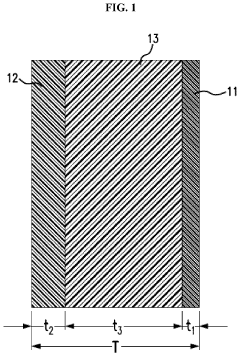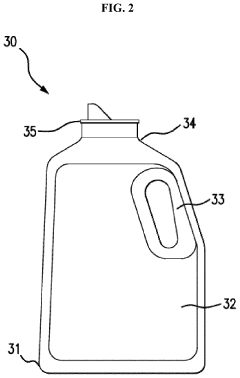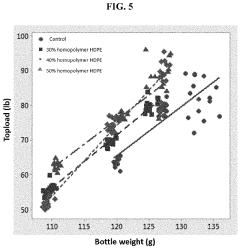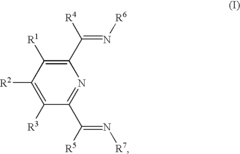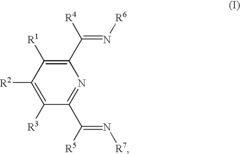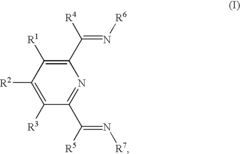How to Optimize HDPE for Eco-Conscious Consumers?
HDPE Eco-Optimization Background and Objectives
High-density polyethylene (HDPE) has been a cornerstone of the plastics industry since its commercial introduction in the 1950s. Known for its versatility, durability, and cost-effectiveness, HDPE has found widespread use in packaging, construction, and consumer goods. However, as environmental concerns have grown in recent decades, the sustainability of HDPE has come under scrutiny.
The evolution of HDPE technology has been driven by the need for improved performance and, more recently, enhanced environmental compatibility. Early developments focused on increasing strength and chemical resistance, while recent innovations have aimed at reducing environmental impact without compromising functionality. This shift reflects the changing priorities of both industry and consumers in the face of global environmental challenges.
The current technological landscape for HDPE is characterized by a dual focus: maintaining its beneficial properties while addressing ecological concerns. Key areas of development include biodegradability, recyclability, and the incorporation of renewable resources in HDPE production. These efforts align with broader sustainability goals and the increasing demand for eco-friendly materials across various sectors.
Market trends indicate a growing preference for sustainable packaging solutions, with eco-conscious consumers driving demand for environmentally responsible products. This shift has created both challenges and opportunities for HDPE manufacturers and users, necessitating innovation in material science and production processes.
The primary objective of optimizing HDPE for eco-conscious consumers is to develop solutions that maintain the material's desirable properties while significantly reducing its environmental footprint. This involves several key goals: enhancing recyclability to promote a circular economy, reducing the carbon footprint of HDPE production and use, and exploring bio-based alternatives that can substitute or complement traditional HDPE.
Achieving these objectives requires a multifaceted approach, combining advances in polymer science, manufacturing technologies, and waste management systems. It also necessitates collaboration across the value chain, from raw material suppliers to end-users and recyclers, to create holistic solutions that address the entire lifecycle of HDPE products.
The path forward for HDPE optimization is shaped by regulatory pressures, consumer expectations, and technological advancements. As governments worldwide implement stricter environmental regulations and consumers become more environmentally aware, the plastics industry faces increasing pressure to innovate. This context sets the stage for transformative research and development efforts aimed at reimagining HDPE for a sustainable future.
Eco-Conscious Consumer Market Analysis
The eco-conscious consumer market has experienced significant growth in recent years, driven by increasing awareness of environmental issues and a desire for sustainable products. This trend has created a substantial demand for environmentally friendly alternatives to traditional plastics, including High-Density Polyethylene (HDPE). The market for eco-friendly HDPE products is expected to continue expanding as consumers become more environmentally conscious and governments implement stricter regulations on plastic use and disposal.
Consumer behavior studies indicate that eco-conscious consumers are willing to pay a premium for products that align with their values. This presents an opportunity for manufacturers to develop and market optimized HDPE products that meet sustainability criteria. Key factors influencing purchasing decisions among this demographic include recyclability, biodegradability, reduced carbon footprint, and overall environmental impact throughout the product lifecycle.
The eco-conscious consumer segment spans various age groups, with millennials and Gen Z showing particularly strong interest in sustainable products. These younger generations are more likely to research a product's environmental impact before making a purchase and are often vocal about their preferences on social media platforms. This behavior has a ripple effect, influencing older generations and driving broader market shifts towards sustainability.
Market research reveals that eco-conscious consumers are particularly interested in HDPE products used in packaging, household items, and personal care products. There is a growing demand for reusable HDPE containers, eco-friendly packaging solutions, and durable household goods made from recycled or bio-based HDPE. The construction and automotive industries are also seeing increased interest in sustainable HDPE applications, as consumers seek environmentally friendly options in all aspects of their lives.
Geographically, the market for eco-optimized HDPE products is most developed in North America and Europe, where environmental regulations are stricter and consumer awareness is higher. However, rapid growth is also observed in Asia-Pacific regions, particularly in countries like Japan, South Korea, and urban areas of China, where environmental concerns are gaining prominence.
The competitive landscape for eco-friendly HDPE products is becoming increasingly crowded, with both established plastic manufacturers and innovative startups vying for market share. Companies that can effectively communicate the environmental benefits of their optimized HDPE products and provide transparent information about their production processes are likely to gain a competitive edge in this market.
To capitalize on this market trend, manufacturers must focus on developing HDPE products that not only meet functional requirements but also address the environmental concerns of eco-conscious consumers. This may involve incorporating recycled content, improving recyclability, reducing material usage through innovative design, or exploring bio-based alternatives. Additionally, companies should invest in clear and credible eco-labeling and marketing strategies to effectively reach and engage this growing consumer segment.
HDPE Sustainability Challenges and Barriers
The optimization of High-Density Polyethylene (HDPE) for eco-conscious consumers faces several significant challenges and barriers. One of the primary obstacles is the inherent nature of HDPE as a petroleum-based plastic, which contradicts the growing demand for sustainable and renewable materials. This fundamental characteristic makes it difficult to align HDPE with the expectations of environmentally conscious consumers who prioritize products derived from renewable sources.
Another major challenge lies in the end-of-life management of HDPE products. While HDPE is technically recyclable, the recycling rates for this material remain relatively low in many regions. This is partly due to inadequate recycling infrastructure and the complexity of sorting and processing different types of plastics. The presence of additives and colorants in HDPE products further complicates the recycling process, often resulting in downcycling rather than true circular recycling.
The energy-intensive production process of HDPE presents another sustainability barrier. The manufacturing of HDPE requires significant amounts of fossil fuels, both as raw material and energy source, contributing to greenhouse gas emissions and climate change. This aspect of HDPE production is particularly concerning for eco-conscious consumers who are increasingly aware of the carbon footprint associated with the products they purchase.
Furthermore, the durability of HDPE, while beneficial in many applications, becomes a double-edged sword when considering its environmental impact. HDPE's resistance to degradation means that when it does end up in the environment, it persists for hundreds of years, contributing to the global plastic pollution crisis. This longevity is at odds with the growing consumer preference for materials that can safely and quickly biodegrade or compost at the end of their useful life.
The challenge of reducing the environmental impact of HDPE without compromising its desirable properties presents a significant barrier to its optimization for eco-conscious consumers. Attempts to incorporate bio-based or biodegradable additives often result in a trade-off between sustainability and performance, making it difficult to meet both environmental and functional requirements simultaneously.
Lastly, there is a growing consumer skepticism towards plastic materials in general, including HDPE, due to increased awareness of plastic pollution. This negative perception creates a barrier to the acceptance of HDPE products, even when efforts are made to improve their sustainability profile. Overcoming this perception requires not only technological advancements but also effective communication and education strategies to inform consumers about the potential benefits and improvements in HDPE sustainability.
Current Eco-Optimization Techniques for HDPE
01 Biodegradable HDPE composites
Development of biodegradable HDPE composites by incorporating natural fibers or biodegradable additives. These composites aim to improve the eco-friendliness of HDPE while maintaining its desirable properties, potentially reducing environmental impact and enhancing end-of-life options.- Biodegradable HDPE compositions: Development of biodegradable HDPE compositions that incorporate additives or modifications to enhance the material's eco-friendliness. These compositions aim to reduce environmental impact by improving the degradation rate of HDPE while maintaining its desirable properties.
- Recycling and reuse of HDPE: Advancements in recycling technologies and processes for HDPE, including improved sorting, cleaning, and reprocessing methods. These innovations aim to increase the recycling rate of HDPE and promote its reuse in various applications, reducing waste and conserving resources.
- HDPE blends with eco-friendly materials: Creation of HDPE blends that incorporate natural fibers, biopolymers, or other environmentally friendly materials. These blends aim to reduce the overall environmental impact of HDPE products while maintaining or enhancing their performance characteristics.
- Eco-friendly HDPE production processes: Development of more sustainable production processes for HDPE, including the use of renewable energy sources, catalysts, and raw materials. These innovations aim to reduce the carbon footprint and environmental impact associated with HDPE manufacturing.
- HDPE applications promoting sustainability: Innovative applications of HDPE that contribute to environmental sustainability, such as in renewable energy systems, water conservation, and eco-friendly packaging. These applications leverage HDPE's properties to create products that have a positive environmental impact.
02 Recycling and upcycling of HDPE
Innovative methods for recycling and upcycling HDPE products, including improved sorting techniques, chemical recycling processes, and the development of new applications for recycled HDPE. These approaches aim to reduce waste and promote a circular economy for HDPE materials.Expand Specific Solutions03 HDPE with reduced environmental impact
Formulation of HDPE with additives or modified production processes to reduce its environmental footprint. This includes the development of HDPE with lower carbon emissions during production, improved durability for extended product life, and enhanced recyclability.Expand Specific Solutions04 Bio-based HDPE alternatives
Research and development of bio-based alternatives to traditional HDPE, using renewable resources as feedstock. These materials aim to maintain the performance characteristics of HDPE while reducing reliance on fossil fuels and potentially offering improved biodegradability.Expand Specific Solutions05 HDPE in eco-friendly packaging solutions
Application of HDPE in innovative, eco-friendly packaging designs that minimize material usage, enhance recyclability, or incorporate reusable concepts. This includes the development of mono-material packaging solutions and designs that facilitate easy separation of components for recycling.Expand Specific Solutions
Key Players in Sustainable HDPE Industry
The optimization of HDPE for eco-conscious consumers is in a growth phase, driven by increasing environmental awareness and regulatory pressures. The market size is expanding, with major players like Dow Global Technologies, ExxonMobil, and SABIC leading innovation efforts. The technology maturity varies, with established companies focusing on recyclability and bio-based alternatives, while newer entrants explore novel approaches. Companies such as DuPont and LG Chem are investing in sustainable HDPE solutions, indicating a competitive landscape that balances traditional petrochemical expertise with emerging green technologies. The involvement of universities and research institutions suggests ongoing advancements in eco-friendly HDPE formulations and processing methods.
Dow Global Technologies LLC
SABIC Global Technologies BV
Innovative HDPE Eco-Technologies Review
- A molded multilayer polymer structure comprising a body wall with a first layer of copolymer HDPE, a second layer of homopolymer HDPE, and a third layer that combines both, with a total weight content of homopolymer HDPE at least 30 wt-%, including regrind and post-consumer resin, to achieve improved mechanical and ESCR properties without costly processes.
- HDPE is produced using polymerization catalysts comprising iron or cobalt complexes of specific compounds, such as those with aryl and substituted aryl groups, which significantly reduce water vapor and oxygen transmission rates, making them suitable for improved packaging.
Environmental Regulations Impact on HDPE
Environmental regulations have a significant impact on the production, use, and disposal of High-Density Polyethylene (HDPE). As eco-conscious consumers drive demand for more sustainable products, these regulations are becoming increasingly stringent, shaping the future of HDPE in various industries.
In the European Union, the Packaging and Packaging Waste Directive (PPWD) sets targets for recycling and recovery of packaging materials, including HDPE. This directive requires member states to achieve a 50% recycling rate for plastic packaging by 2025, increasing to 55% by 2030. Such regulations have led to increased investment in recycling infrastructure and the development of more recyclable HDPE products.
The United States has implemented similar measures through the Resource Conservation and Recovery Act (RCRA), which governs the management of solid waste, including plastic materials like HDPE. Additionally, several states have introduced Extended Producer Responsibility (EPR) laws, requiring manufacturers to take responsibility for the entire lifecycle of their products, including disposal and recycling.
In Asia, countries like China and Japan have also implemented strict regulations on plastic waste. China's National Sword Policy, introduced in 2018, banned the import of most plastic waste, forcing many countries to reassess their plastic waste management strategies. This has led to increased pressure on HDPE manufacturers to develop more sustainable and recyclable products.
These regulations have spurred innovation in HDPE production and recycling technologies. Manufacturers are now focusing on developing HDPE grades that are easier to recycle and have a lower environmental impact. This includes the use of bio-based feedstocks, the incorporation of recycled content, and the design of products that are more easily recyclable at the end of their life cycle.
The impact of environmental regulations on HDPE extends beyond production and recycling. Many countries have implemented bans or taxes on single-use plastic items, many of which are made from HDPE. This has led to a shift towards reusable alternatives and the development of HDPE products designed for multiple uses.
Furthermore, regulations are driving the adoption of lifecycle assessment (LCA) methodologies in the HDPE industry. Manufacturers are increasingly required to evaluate and report on the environmental impact of their products throughout their entire lifecycle, from raw material extraction to disposal or recycling.
As environmental concerns continue to grow, it is likely that regulations will become even more stringent in the future. This will require ongoing innovation and adaptation in the HDPE industry to meet the evolving demands of both regulators and eco-conscious consumers.
Life Cycle Assessment of Eco-Optimized HDPE
Life Cycle Assessment (LCA) is a crucial tool for evaluating the environmental impact of eco-optimized High-Density Polyethylene (HDPE) throughout its entire lifecycle. This comprehensive analysis encompasses raw material extraction, production, use, and end-of-life disposal or recycling. By conducting a thorough LCA, manufacturers can identify key areas for improvement and develop strategies to minimize the ecological footprint of HDPE products.
The assessment begins with the extraction and processing of raw materials, primarily ethylene derived from natural gas or petroleum. This stage typically accounts for a significant portion of the overall environmental impact due to energy consumption and emissions associated with fossil fuel extraction. However, eco-optimized HDPE may incorporate recycled content or bio-based materials, potentially reducing the reliance on virgin petrochemicals and lowering the carbon footprint.
During the production phase, the LCA examines energy consumption, water usage, and emissions from polymerization and molding processes. Eco-optimized HDPE manufacturing may employ more efficient technologies, such as catalytic processes that reduce energy requirements and minimize waste generation. Additionally, the use of renewable energy sources in production facilities can further decrease the carbon intensity of this stage.
The use phase of HDPE products varies widely depending on the application. For packaging materials, this phase may be relatively short, while construction materials or durable goods have extended lifespans. Eco-optimized HDPE products are often designed for longevity, repairability, and reusability, which can significantly reduce their overall environmental impact by extending the product's useful life and reducing the need for replacement.
End-of-life considerations are particularly critical in the LCA of eco-optimized HDPE. The assessment evaluates various disposal scenarios, including landfilling, incineration, and recycling. Eco-optimized HDPE is typically designed for enhanced recyclability, with improved sorting and processing characteristics. The LCA quantifies the benefits of recycling, such as reduced energy consumption and greenhouse gas emissions compared to virgin material production.
Furthermore, the LCA considers the potential for closed-loop recycling systems, where HDPE products are recycled into new products of similar quality. This approach maximizes resource efficiency and minimizes waste, aligning with circular economy principles. The assessment may also explore innovative end-of-life options, such as chemical recycling technologies that break down HDPE into its chemical components for reuse in new polymer production.
By conducting a comprehensive LCA, manufacturers can identify hotspots in the HDPE lifecycle and prioritize optimization efforts. This may lead to innovations in material formulation, production processes, product design, and recycling technologies. The results of the LCA provide valuable insights for eco-conscious consumers, enabling them to make informed decisions based on the true environmental impact of HDPE products throughout their entire lifecycle.
